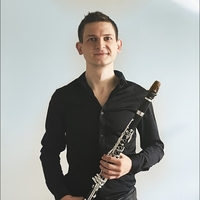Testing the Benz-Tec Digital Reed Tester: A Clarinetist’s Honest Review
Should You Try the Benz-Tec Digital Reed Tester? I've tested it for you!
Today, I'm diving into a cool gadget that’s got me intrigued: the Benz-Tec Digital Reed Tester. This handy tool is made for clarinet and saxophone players looking for precision in their reed selection. And to be clear, I’m not affiliated with the company—I bought this device myself, so here’s my honest take!
What Does This Device Do?
In essence, the Benz-Tec Digital Reed Tester allows you to measure and compare the strength of your reeds. Rather than relying on vague numbers or a subjective “feel,” it provides a reading on a 100-point scale, offering a level of precision that typical manufacturer ratings don’t usually hit.
Using the Device
Setting up and using the Reed Tester is incredibly straightforward, thanks to Benz-Tec’s minimalistic manual, which boils down to three steps:
- Start
- Place
- Read
That’s it! It’s user-friendly and works right out of the box.

The device calculates reed strength by measuring the force needed to bend the tip until it touches a flat surface. This gives you quick and clear results.
Consistency and Accuracy
The first thing I was eager to test was the device’s consistency. It turns out that as long as you push the reed to the very end of the black slot, it’s impressively reliable, with readings deviating by only 0.0 to 0.1.
For a more realistic test, I tried measuring reeds in different conditions: wet versus dry. A wet reed tends to score about 0.8 to 1.0 lower than a dry one. When the reed is dry, the readings closely align with the “official” strength values from the manufacturer - a big plus in my book!


Does the Testing Process Affect the Reed?
After running some tests, I noticed a slight feeling that maybe, just maybe, bending the reed repeatedly might be altering its feel. Naturally, I wanted to investigate further. My plan was to measure the strength of 10 reeds each about ten times to see if the readings changed over time.
But then, a snag: the device suddenly started displaying readings between 0.0 and 0.5, no matter the reed. After multiple resets and retries, I realized it had to go back for repairs or replacement. Hopefully, I’ll have an update on this issue soon!
In the meantime, there’s one last experiment I can try. If the testing process does warp the reed, it should be visible on a flat surface. I’ve captured a video of this test, so take a look and decide for yourself!
PS.: Many reed manufacturers are testing the reed strength by measuring the flexibility of the reeds. One test probably won't harm your reed at all. However I wouldn't recommend to test it many times like this.
Update from David, a kind user who shared additional experience with the product:
If upon multiple restarting, the device does not read zero, the method to reset it is: while on, press and hold down the on/off button until the numbers increase to a stable high value. This was about 12.2 in his case. Then after turning off and on it again, it reads zero. After that he has found the device to seem to be accurate and gave reproducible results.
More Data on Reed Testing
As for Vandoren Traditional reeds, David tested two boxes of strength 4 reeds. For these, dry and wet, he obtained:
| Box: | 1 | 1 | 2 | 2 |
|---|---|---|---|---|
| Condition | Dry | Wet | Dry | Wet |
| Strength | 4.0 | 4.0 | 4.0 | 4.0 |
| Benz Mean | 3.9 | 3.2 | 3.9 | 3.1 |
| Std Dev | ±0.3 | ±0.3 | ±0.2 | ±0.2 |
| No. | 10 | 10 | 10 | 10 |
Please let us know in the comments below if you have any experience with this reed tester!
Do you like this article?
Thanks for your feedback

World’s #1
Reed Recommendation System
We believe every musician deserves a reed that matches their unique style and sound. Each reed is selected with cutting-edge AI and machine learning based on your playing feedback.
Check out the best clarinet jokes to brighten your day!
Struggling to hit the right notes? Your instrument might be the culprit! Learn how to fix intonation problems and stay in-tune.
Unleash the full potential of your clarinet with our exclusive care guide. Elevate your playing with tips that ensure your instrument remains in perfect condition.
Here are the top 7 picks of best applications to download for classical musicians. Tuners, Metronomes and more.
Buffet Crampon's latest innovation: the Prodige Pocket Clarinet. Is it really the best instrument for young clarinetists? Check out our review!
Discover the best clarinet mouthpieces! Check out our reviews and recommendations for Bb and Bass clarinet.
Learn the technique of circular breathing. Expert guide with step-by-step instructions and troubleshooting tips for continous breathing.
A groundbreaking innovation of Buffet Carmpon: Clarimate. This is our honest review about its innovative features and real-world performance. Is it for you?
Discover the role of clarinet ligatures in achieving optimal sound and control. Explore various ligature types, materials, and techniques to enhance your clarinet playing experience.
Discover the Vandoren VK1 clarinet reed, a breakthrough in synthetic reed technology. Experience stability, durability, and consistent performance.

